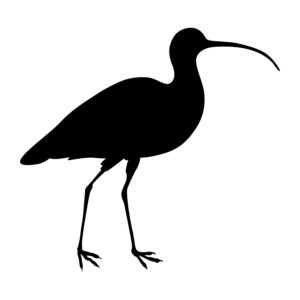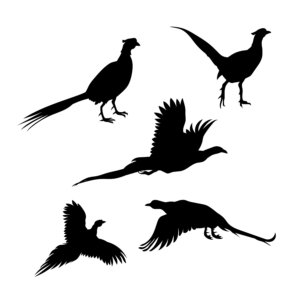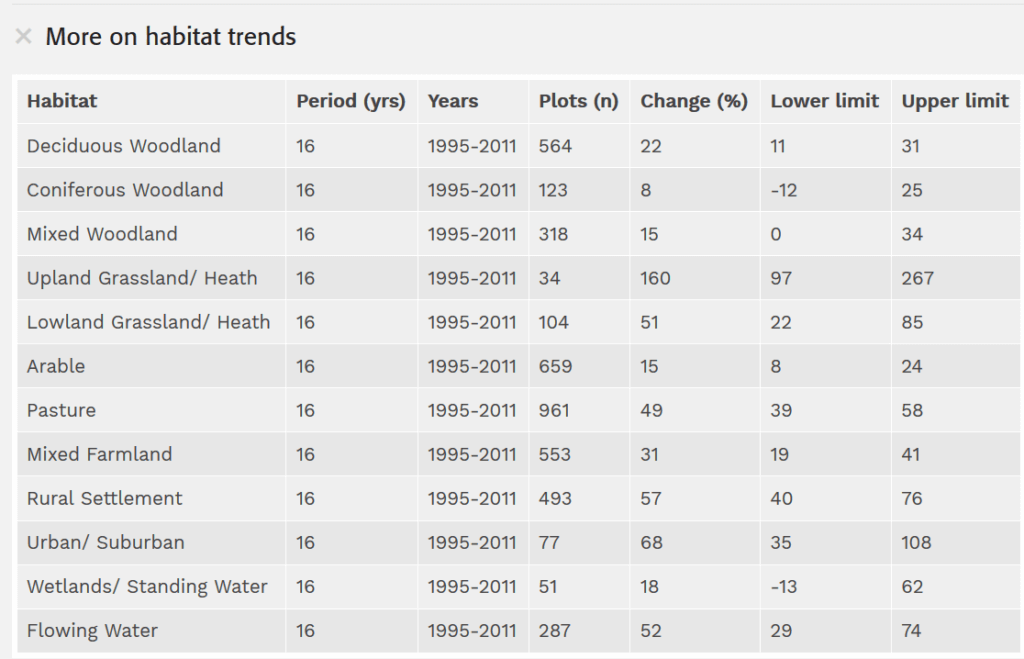The Daily Telegraph quotes Jake Berry (who is unfortunately likely to have a prominent role in any Johnson government) as wanting to make the hook-beaked (eh?) Curlew ‘the panda of UK conservation.’. Jake will never persuade Curlews to eat bamboo and give up sex but maybe that wasn’t what he meant.

Because this is the Telegraph, and because it is written by Christopher Hope the chief political correspondent (he has form), it’s high on bigging up the large gang of ministers who were gathered around the table worrying about the panda of the north (I wonder how many ministers were present?) and high on predators being the main problem for Curlew.

Predators are thought to be a big problem for nesting Curlew – especially Red Foxes but to a lesser extent (as I read the evidence) Carrion Crows (and to no significant extent whatsoever Jay, Magpie, Rook or Jackdaw).
When people go on about the problem of predation they tend to get pretty rapidly to the solution being killing the predators rather than looking at why there are so many predators who spend some of their time eating Curlew eggs and chicks.

And one of the reasons we probably have so many Red Foxes and Carrion Crows is that we are feeding them Pheasants in mind-boggling numbers every year. If you put 33,000 tonnes of Pheasant meat into the countryside you might expect to see carrion eaters doing rather well.
Now you might think, as I did once, that Pheasant releases and Curlew declines cannot possibly be linked but now I’d be pretty sure that they are, to some extent. Every time I hear ‘predation problem’ I now think ‘Pheasant problem?’.

But surely, you might think, as I once did, that Pheasants are a lowland species whereas Curlew live in the uplands. Well, hang on, Curlew now live mostly in the uplands because they’ve disappeared from the lowlands so that doesn’t work as an argument at all. The big increases in lowland Pheasant releases over decades will have boosted lowland predator numbers and put extra pressure on lowland Curlews – and lowland Snipe, lowland Redshank and lowland Lapwings one would imagine.
And as I have visited the moorlands of Britain in recent years I have been gobsmacked by the numbers of Pheasants running around on the roads in upland Britain in July and August. I remember stopping on the road through Bowland on one occasion to look over the moorland and hearing Pheasant after Pheasant calling from the heather before I eventually heard a Red Grouse. As I descended towards Abbeystead there were legions of Pheasants running about in the road. In the Yorkshire Dales and North York Moors (yes, National Parks!) the roads in late summer are carpetted in places by squidged Pheasants (all feeding the local Red Foxes and Carrion Crows of course).
And if you look at the BTO breakdown of population trends for Pheasants – I am guessing you never have – then you find this interesting information on how Pheasant numbers have changed in different habitats;

Note that this information is a little out of date but it shows that Pheasant breeding numbers (these are measured in spring through BBS) have increased everywhere but have increased most in upland areas (although unfortunately the smallest sample size). And that increase is an average of a two and a half times increase. A 160% increase (ie from an index of 100 to one of 260) in a mere 16 years! And that increase is fuelled by increased numbers of released Pheasants – which is an even higher percentage increase. So if you were looking for the cause of increased predator pressure on Curlews in the uplands you might well look at increased numbers of Red Foxes, but if you wanted to know why Red Fox numbers have increased then you might well have to thank the local Pheasant shoot and its gamekeepers for feeding the Red Foxes. And those are the Red Foxes that are eating the Curlew.
And that’s how Pheasants attack Pandas, I mean Curlews.
[registration_form]
I wish a certain wildlife artist had had a camera (rather than brushes and water colours?) with him when he saw a pheasant snaffle down a lapwing chick even as ten adult ones tried to mob its attacker. The poor wee bugger’s death would not have been in vain if he had, one picture or even a short piece of video footage of that and how would or more to the point how could the GWCT, BASC, NGO, Moorland Association and Countryside Alliance have responded? What an incredible political embarrassment that would be over one photo or fifteen seconds of video. Would it be practical for the crop, gizzard and stomach contents of road kill pheasants to be examined to determine what they’ve been eating? Maybe nobody has sat down and tried to do field studies of the bird because it’s not technically ‘wild’, more like an ultra free range chicken. In lieu of official research for now time for a bit of citizen science?
In the face of the barrage of claptrap which is bound to spew forth from the “representatives” of the shooting sector and of wealthy land owners, on the subject of Curlews in particular – possibly UK next highly politicised bird species, ALL conservation voices need to state repeatedly, clearly and consistently that generalist predators are not the cause of declines in Curlews.
Changes in land management and farming have decimated Curlew numbers so that now that they are rare, generalist predators are having an impact on their breeding success and their future. Curlews and predators have coexisted for Centuries in the UK prior to these changes. It is only now when they are so rare that Foxes etc are now their potential nemesis.
In a world of sound bites, short attention spans and poor journalism it’s very easy just to peddle the back end of the argument – that foxes/crows are impacting breeding success – and back it up with a bit of science and a bit of the old “RSPB shoot Foxes to protect Curlews” chat to appear perfectly plausible. The nasty brigade have chosen their Trojan horse species well and we will have a fight on our hands.
We need to bang the drum loudly. Humans caused this. Not Crows.
If you expect anyone in our current government to make any sense of that I think your going to be disappointed.
Expect the usual guff before they go back to munching on their lead shot.
Silage.
Yep
Absolute twaddle.
Pheasant have been released in the forest of bowland for decades and we have a very large population of curlews. The last two years especially have been brilliant breeding seasons. Come up and have a look next spring Mark. I’d be happy to show you around. We’ll probably see some hen harrier, kestrel, merlin, short eared owl, barn owl, buzzard, tawney owl, sparrow hawk, goshawk, eagle owl as well.
So you can have Curlew, pheasant and Raptors co existing?
Absolute make-believe.
If you wish to convince the readers here of your statements concerning “brilliant breeding seasons” you’ll need some years of data. I suspect it may not exist, but if it does it will be in the form of BTO-survey archives, not idle chit-chat and say-so.
Lots of pheasant shooting in the Forest of Bowland? I can quite believe that. I spent two separate week long residential conservation holidays there in the new year periods of 1993/94 and 1995/96. Vast majority of that involved clearing invasive rhododendron out of two separate woods where ground flora and native fauna had been swamped and driven out. Years later realised the rhoddie had almost certainly been planted out originally as game cover. The woods were not public amenity ones with plantings of various ornamental plants and quite remote where there was culture of driven grouse shooting on higher ground. God knows how much of the FoB and elsewhere has been rendered a wildlife desert by this, and it’s still going on with other invasive plant species and in fact several are still being sold by nurseries to be used as cover for game. Not surprising that we saw hardly any wildlife in the FoB no matter where we went, not all down to time of year either.
It’s not twaddle. I lived in the Forest of Bowland over 25 years ago, and have spent a lot of time there, walking, running, birding, general natural history stuff. You never used to see Pheasants on the high fells, and never in the number you now see them. What’s more the Curlew population is nowhere near what it used to be. What happened to all the breeding Peregrines, before mentioning Hen Harriers and the slaughter of declining Lesser-black Backed Gulls, which takes place in Bowland.
I can confirm that there has been a massive increase in Pheasants found in the uplands in the Forest of Bowland, and I’ve lived in the Forest of Bowland. Every time I’ve been back I’ve been amazed at the amount of Pheasants, even high on the fells, where you used to see none.
The vast majority of pheasant kills are by foxes pinning them up against sheep/pig netting fences and the remains if any being scavenged by crows and kites etc.